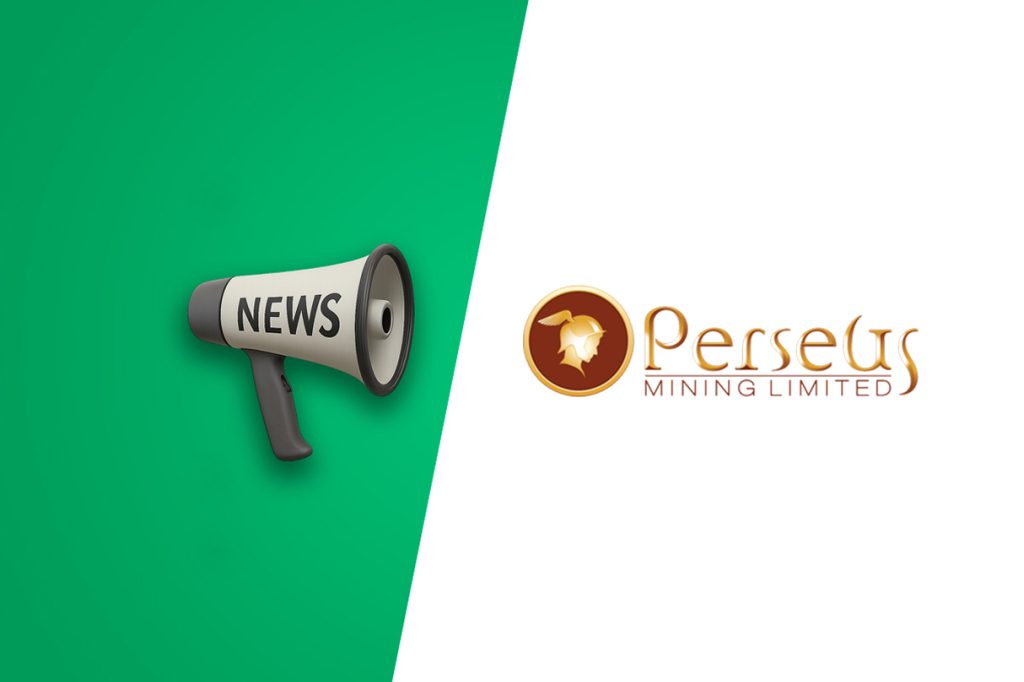Perseus Mining has reported a dramatic 72% increase in its gold reserves, bringing the company’s total to 5 million ounces across its operations in Africa. This significant growth, representing an additional 2.1 million ounces from June 2024 levels, comes as the company implements a new portfolio optimization strategy that prioritizes the most promising opportunities across its assets.
The company’s Measured and Indicated Mineral Resources now stand at 7.8 million ounces of gold acro
...
Perseus Mining has reported a dramatic 72% increase in its gold reserves, bringing the company’s total to 5 million ounces across its operations in Africa. This significant growth, representing an additional 2.1 million ounces from June 2024 levels, comes as the company implements a new portfolio optimization strategy that prioritizes the most promising opportunities across its assets.
The company’s Measured and Indicated Mineral Resources now stand at 7.8 million ounces of gold across operations in Côte d’Ivoire, Ghana, and Tanzania, positioning Perseus as an increasingly important player in the mid-tier gold production sector.
The Nyanzaga Gold Project in Tanzania has emerged as the cornerstone of Perseus’s expanded portfolio, contributing the largest single resource with 3.2 million ounces of Indicated resources and 2.3 million ounces of Probable reserves. The project comprises two primary deposits: Tusker and Kilimani, with Tusker providing the vast majority of the resource base.
Perseus completed a Feasibility Study update for Nyanzaga in April 2025, demonstrating the project’s economic viability based on a gold price of US$2,100 per ounce. This addition significantly enhances the company’s growth trajectory and production potential.
Beyond Nyanzaga, Perseus maintains substantial resources across its established operations. The Yaouré Gold Mine in Côte d’Ivoire continues as a key asset with 2.6 million ounces of Measured and Indicated resources and 1.4 million ounces of reserves. Recent additions including the Zain 2 deposit have helped offset the company’s decision to remove the Angovia project from its resource reporting due to technical risks.
“The technical risks associated with mining and backfill of the planned Angovia open pit, and the subsequent placement of the proposed tailings storage facility embankment across the backfill area, was considered too great to progress,” the company explained in its technical assessment.
The Sissingué Gold Mine, also in Côte d’Ivoire, contributes 373,000 ounces of Measured and Indicated resources and 237,000 ounces of reserves. This operation integrates several deposits, including the main Sissingué deposit, Fimbiasso West, and mineralizations at Antoinette, Juliette, and Veronique within the Bagoé Project.
In Ghana, Perseus’s Edikan Gold Mine maintains strategic value with 1.6 million ounces of Measured and Indicated resources and 980,000 ounces of reserves. The operation has benefited from new cutbacks at several pits, helping to offset depletion from ongoing mining activities.
The company has shifted away from fixed investment targets for individual assets, instead adopting a portfolio optimization approach that balances growth opportunities with cash generation. This strategy appears to be paying dividends, enabling Perseus to focus capital allocation on the most promising projects while maintaining operational flexibility across its producing mines.
“As part of its annual planning cycle, the Company has reassessed the growth opportunities available within its portfolio with the approach of optimising the portfolio rather than focusing on fixed investment targets for each asset,” Perseus stated. “In this way, the Company has sought to find the balance between investment in growth opportunities and the cash margin generated by the business.”
Perseus’s economic assessments utilize a gold price of US$2,100 per ounce, with All-In Sustaining Costs projected at US$1,400-1,500 per ounce for Yaouré, US$1,550-1,650 for Sissingué, and US$1,600-1,700 for Edikan. These projections indicate healthy operating margins at current gold prices.
The company also holds interests in Sudan through the Meyas Sand Gold Project, which adds potential upside with 3.3 million ounces of Indicated resources and 2.9 million ounces of Probable reserves. These figures are classified as Foreign/Historical Estimates and are not included in Perseus’s JORC-compliant totals.
All of Perseus’s Mineral Resources and Ore Reserves, excluding Meyas Sand, have been calculated in accordance with the 2012 Australasian Code for Reporting of Exploration Results, Mineral Resources and Ore Reserves (JORC Code) and National Instrument 43-101 standards, ensuring investors can rely on internationally recognized technical standards.
With its diversified geographic footprint across four African countries, Perseus has created operational flexibility and risk mitigation advantages. The substantial increase in reserves provides a foundation for extended mine life and production growth, particularly with Nyanzaga positioned to transform the company’s production profile in the coming years.


